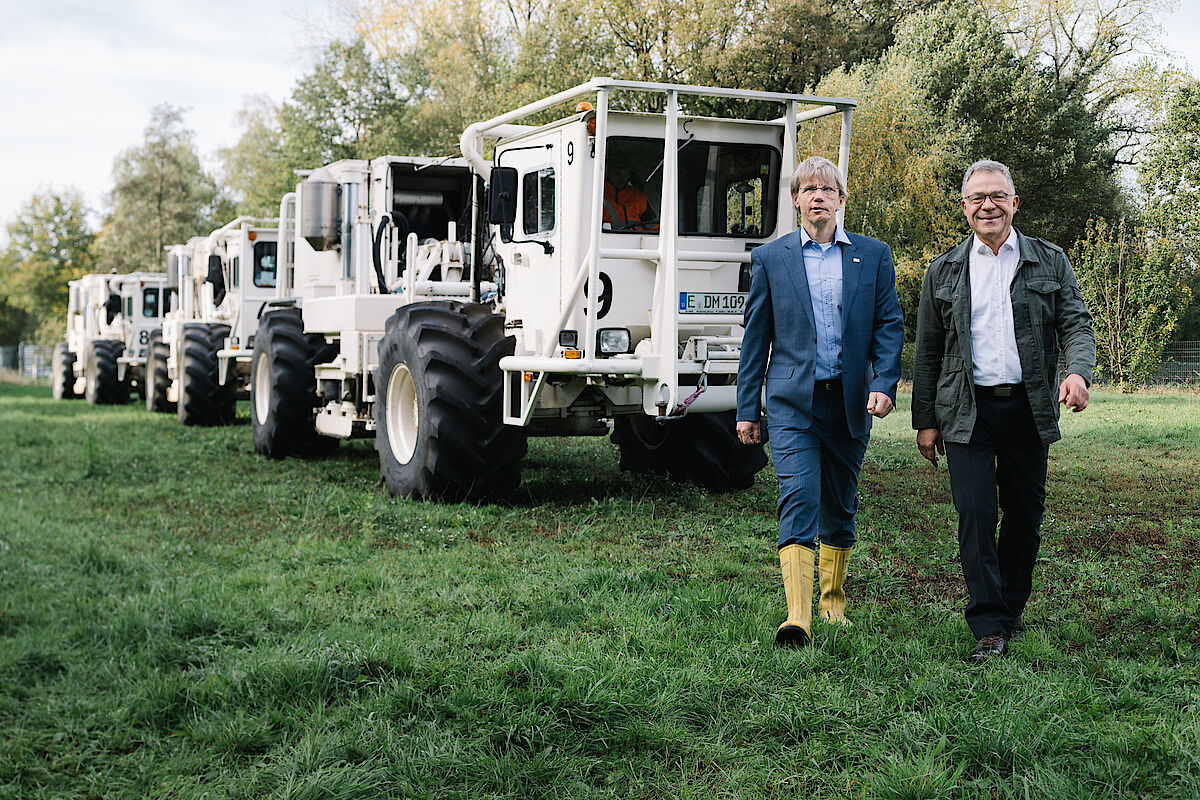Around a third of the energy consumed in Germany is used for heating and hot water. Three quarters of this heat is generated using imported fossil fuels, which are becoming increasingly expensive due to the influence of unstable supply relationships in the medium term. Climate change caused by combustion gases is likewise prompting us to have a rethink and act swiftly.
Local politicians who recognise that the earth can provide us with an unlimited supply of heat can be climate-saving trailblazers and can guarantee security of supply. It’s simply a question of exploiting this supply – in the form of deep geothermal energy.
The German government now recognises this too – according to the Federal Ministry for Economic Affairs and Climate Action, 50 per cent of the nation’s heat supply is to be generated climate-neutrally by 2030. ‘The Climate Action Status report of January 2022 therefore contains the specific target of developing geothermal potential of 10 TWh by 2030 as far as this is possible, and to thus multiply the amount fed in from these sources to the heat networks by a factor of ten. In order to do this, we want to initiate at least 100 additional geothermal projects by 2030, connect them to heat networks and use the geothermal energy in residential buildings, neighbourhoods and industrial processes. Regions where geothermal energy is an appropriate source are therefore to be identified in an exploration campaign, and the information is to be provided to the municipalities. Throughout the process, consideration is to be given to all the questions of safety and environmental protection,’ says the ministry.
From a political and economic perspective, geothermal energy is an important component with which to improve the ability of municipalities and businesses to compete, thereby safeguarding the industrial future of Germany.
Experience shows consistently positive outcomes.
The city of Munich can already supply 40 per cent of its households with district heating via an approximately 900-kilometre-long network. Munich’s municipal utilities are now aiming to do without fossil fuels entirely. The Münchner Merkur newspaper reports that ‘the geothermal power plant in the district of Sendling alone provides enough energy for 80,000 inhabitants. Based on this impressive experience, the municipal utility company Stadtwerke München (SWM) wishes to additionally tap geothermal energy with thermal output of up to 450 megawatts by 2030 to cover the majority of its district heating needs. And the city in Bavaria is confident that the planned investments of around one billion euros will be lucrative in the long term.
Deep geothermal energy is an important component in converting Germany’s energy supply.
The basic principle is simple. You drill two holes. You then withdraw warm/hot water from one of these holes in the ground and feed the cooled water back via the other hole. The earth itself sees to the reheating of the water. Or to use the words of the Leibniz Institute for Applied Geophysics (LIAG): ‘Geothermal energy is a form of renewable energy from the geological substratum. It feeds on the earth’s natural flow of heat and the thermal properties of the earth’s crust. […] Deep geothermal energy is associated with the use of hydrothermal doublets that utilise thermal water for energy. With a drilling doublet, one drill hole (production well) is used to source energy and the other (injection well) is used to maintain sustainability.’
Large heat pumps are used to extract the heat from the water deep in the earth, with this then used to heat the district heating water. In this way, thermal water at temperatures of 40 to 70°C can be exploited for heat networks. In Germany, reservoir temperatures in this range can be found at depths of 400 to 2,500 metres. This is known as mid-depth geothermal energy.
Starting at depths of approximately 3,000 metres, where deep geothermal energy begins, the thermal water is so hot that heat pumps are no longer needed. This is when things get really interesting as no power is needed to run the heat pumps – and you can even generate power.
With geothermal energy, municipalities bring huge potential to the light of day.
If you think that drilling two holes is all it takes, then think again, as there are risks involved. A doublet alone, like the one in Munich, can cost upward of 12 million euros. Finding out whether the substratum is even suitable for the extraction of geothermal energy is therefore essential. Drilling risks due to unexpectedly complex geological formations and, in particular, the potential discovery risk illustrate that drilling projects which lack expert preparation are indeed a very chancy idea.
Having the experts at DMT conduct a detailed exploration before getting down to drilling would be a much safer option. The extensive seismic readings call for an interdisciplinary team of engineers consisting at the very least of experts in the fields of geophysics, geology and geodesy.




